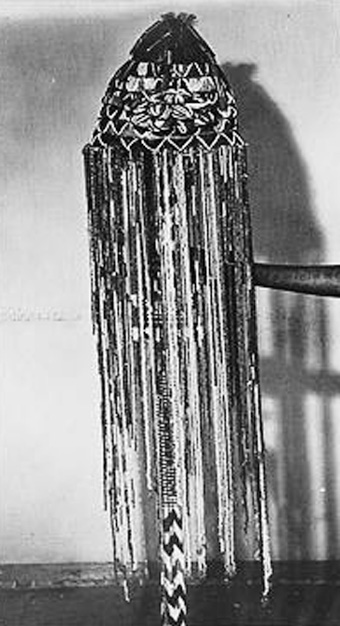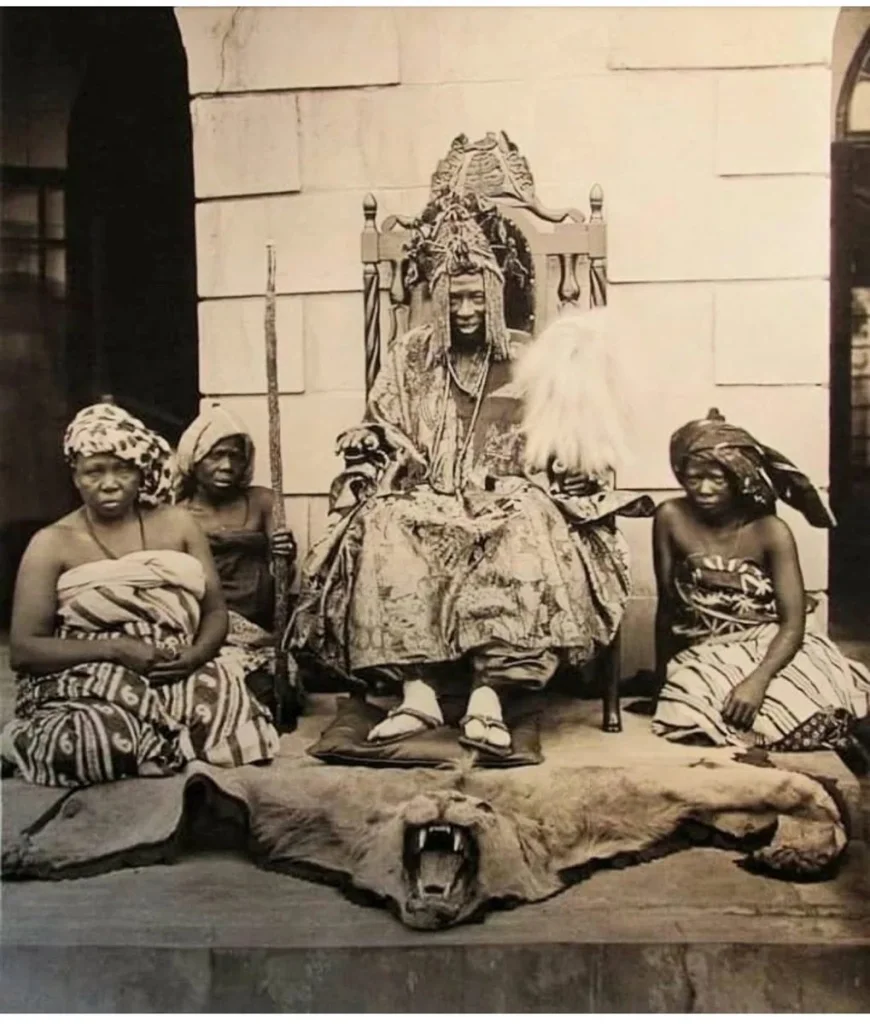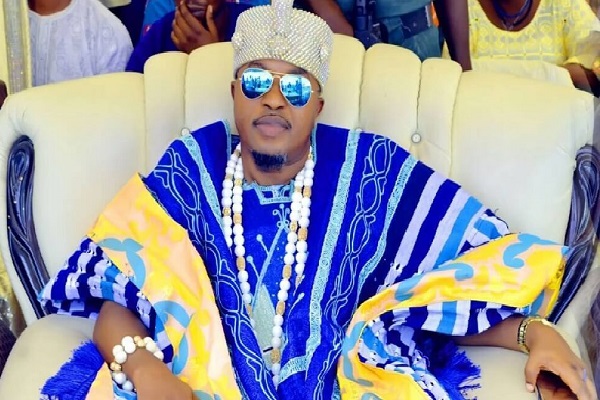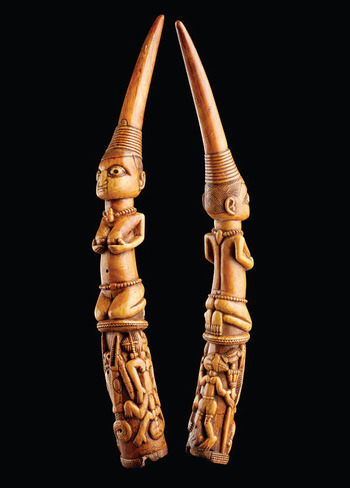Iwo is a town in the Osun state of southwest Nigeria. It is located 6 miles north of the Iwo station on the Lagos–Kano railway, on a low hill at the edge of savanna and forest, and at the intersection of routes from Ibadan, Oyo, and Ogbomosho.
It is believed that the Iwo people, like all other Yoruba people, were originally from Ile-Ife, from which they migrated in the fourteenth century. Adekola Telu, the son of Luwo Gbagida, the 16th Ooni of Ife, established the first village. Thus, Iwo’s current city was established in the 16th or 17th century.
According to history, the Oluwo of Iwoland, HRM Oba Abdulrosheed Akanbi, is the only Consenting Authority and First Class Paramount Ruler, and the central city/Local Government is the most populous local government in Osun State, according to the 2006 Nigerian National Census. It is home to over 30 powerful and ancient kings.
However, the present Oluwo of Iwoland is Oba Abdulrasheed Adewale Akanbi Ilufemiloye Telu 1, who was installed as the 16th Oluwo of Iwoland on November 9, 2015.
In this piece, Naijabiography explores the history and culture of Iwo Town, including the people’s trades and political structure.

History
Ogbaigbai, the eminent Prince of the Ajiboro line of the Alaafin of the Oyo Empire, founded Iwo. At the end of the seventeenth century, Ogbaigbai and his three other blood brothers, princes, left Oyo. Igbaja, Ora, Ikosin, and Iwo all developed their own towns, and gained sizable tracts of agricultural land that they divided among themselves and shared borders with. The kinship and ties to the brothers are still there today.
Each land later developed into the following kingdoms, which served as the headquarters and royal titles for all the cities and villages that had been established on their respective lands: Kingdoms of Iwo, Ora, Ikosin with Iwo, and Oniwo of Iwo, Olora of Ora, Onikosin of Ikosin, and Elese of Igbaja.
Thus, Alaro, Bolorunduro, Odo Eku, Gbagba, Elesuo, Budo Ajia, Sabaja, Obate (now called Oke Aba), Odo Ore (now called Iwo Odu Ore), Wale, Budo Owode, Budo Ajegunle, and Olokin are among the cities and villages that have settled on Iwo land.
Meanwhile, the name Iwo was derived from “Idi igi Oganwo,” the name of the settlement and alter where the founder, Ogbaigbai, was buried. On the site of his tomb, which is now the town’s centre, a memorial structure known as Iboji was constructed. Iwo also shares boundaries with some towns such as Alla, Oba, Owu, and Pamo.
The appellation “Oniwo,” which means the owner of the Iwo (horn), came from the nickname “Oni-Iwo,” which was given to Ogbaigbai in popular culture. As a result, the Oniwo title is unique and peculiar to the head of Iwo. In fact, only Oniwo of Iwo held the title of Oba till the end of the 20th century, neither in the immediate area nor in Nigeria.
History has it that Ogbaigbai, an Oyo prince, brought the Awoji god, the chieftaincy crown, and other kingship symbols with him when he migrated. All the cities in the Iwo kingdom were given a religious and spiritual soul by the Awoji deity and the Aworo priest from Iwo. The Alawoji celebration was traditionally held during the hottest part of the dry season when a miraculous downpour of rain was required to soak the priest and those making their way from the mountain temple to Iwo town.
Meanwhile, the priests of the Agba Isin and the Awoji never entered each other’s territory as a result of a taboo, shared respect, or both. Later, Ogbaigbai teamed up with an Irese hunter who had relocated to a nearby wooded area. The two villages of Iwo and Oke Aba first cooperated to repel Nupe slave raids on Iwo land at Akitimo in 1787. At that time, the dense forest and an odd palm tree with two trunks served as a barrier against the swiftness of the Nupe cavalry.
Years later, Oke Aba was compelled to follow the advice of the oracle and leave the hill covered in Aba trees that gave her name in order to find a new home on Iwo land due to the deaths caused by fire outbreaks and severe diseases. Then-Oniwo of Iwo Oba Ranniawo Olodoko Ayiku granted Oke Aba’s request with deep sympathy after reaching some agreements.
Kingship in Iwo Land
The Oniwo is in charge of the town administration, followed by the Ihare (High Chiefs), the Ologun (Defence Chiefs), and the Eso (the able-bodied and youthful Chiefs). While the women’s community also has a hierarchy of leadership, the Ewe (youth) are at the bottom of the town’s administration. Ile oye, Odo ora, Ile Elemure, Ilenla, Oke Irese, Oke Ore, Oke Ope Alagbede, Ile Olu-Ode, and Ile Elesie are the nine compounds in Iwo.
The first four Oke oniwo complexes alternate holding the kingship. These are Odo Ora, Ile Oye, Ile Elemure, and Ilenle.

Economy
The town’s primary source of revenue comes from the production and export of cocoa. The main staple crops, including yams, corn (maize), cassava (manioc), palm oil, and kernels, are farmed north of the town. Traditional major activities include cotton weaving and dyeing (with indigo growing nearby).
Osun State Agricultural Development Programmes (OSSADEP), as well as Selema Farms, Shabeeb Agro, and many other organizations, are located in Iwo.
Iwo Chamber of Commerce and Industry Limited/GTE was founded in 2018 by individuals with similar interests in the economic growth of Iwoland. The organization, which is entirely distinct from the defunct one founded in 1989, was registered with the Corporate Affairs Commission in 2021.
In order to represent and voice the views of the business community on issues affecting trade and industry in Iwoland, which consists of the three local government areas in the federal constituency (Iwo, Ayedire, and Ola Oluwa), Iwoland Federal Constituency, and, when appropriate, the entire State of Osun and the Federation, the Iwo Chamber of Commerce and Industry was established.

Political Structure
The Oluwo of Iwoland, HRM Oba Abdulrosheed Akanbi, is the only consenting authority and first-class paramount ruler over the 245 km2 (central city/Local Government), which is the most populous local government in Osun State according to the 2006 Nigerian National Census. It is home to over 30 powerful and ancient kings.
Aiyedire Local Government, with a 265.783 km2 area and 76,309 residents, and Ola-Oluwa Local Government, with a 332.117 km2 area and 76,227 residents, are the other local governments in Iwo from satellite towns. The local government’s three main offices are located at Iwo (Central), Ile Ogbo, Aiyedire, and Ola-Oluwa, Bode-Osi. Iwo East, Olomowewe; Iwo West, Agberire; and Ayedire South East, Oluponna are the new additions to the local government of Iwo.

Modern-Day Iwo Land
According to research, Reality Television Service (RTS), which was established in Iwo 40 years ago, is the first state television station in Nigeria. On average, the NTA Ibadan is only 21 years older than it. Reality Radiovision Services (RRS), also known as “odidere fm or 96.3 FM,” is based there. Additionally, Iwo has Bowen Radio 101.9fm and an outdated radio station at ori eru Iwo Am that was shut down by the government of Osun State.
Iwo land has some tertiary institutions which include Bowen University, Wolex Polytechnic, and Baptist Teachers’ Training College, Westland University, Iwo City Polytechnic, Royal College of Public Health and Technology, among others.






Comments
Owolabi
2 years agoMay i let you know that you have alot of pit fall in your writeup?The first Iwo is igbomina stock of yoruba, in Isin local goverment on kwara state.Nigeria but not Iwo,Osun State.